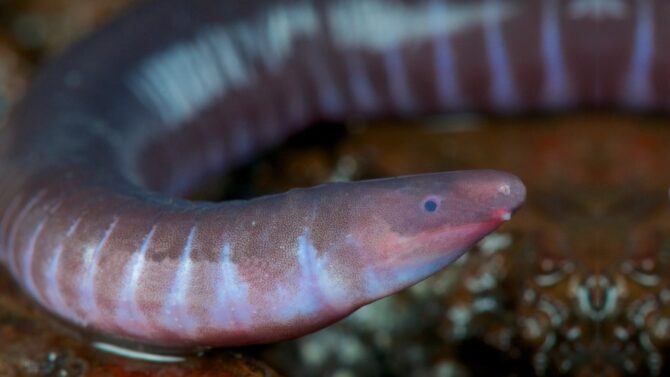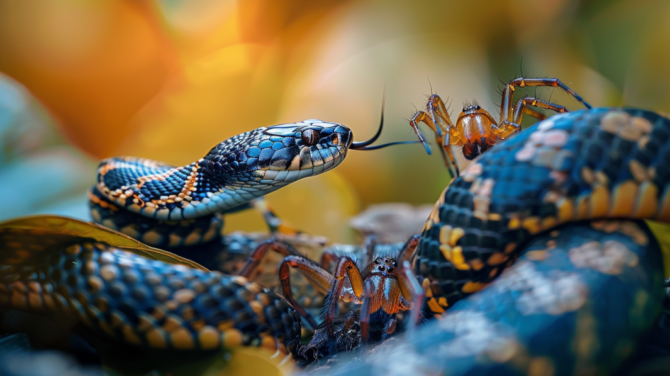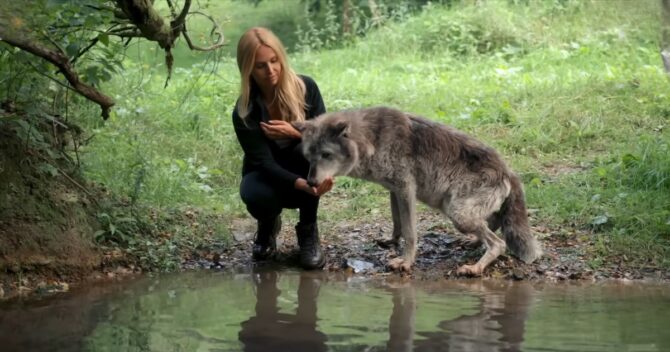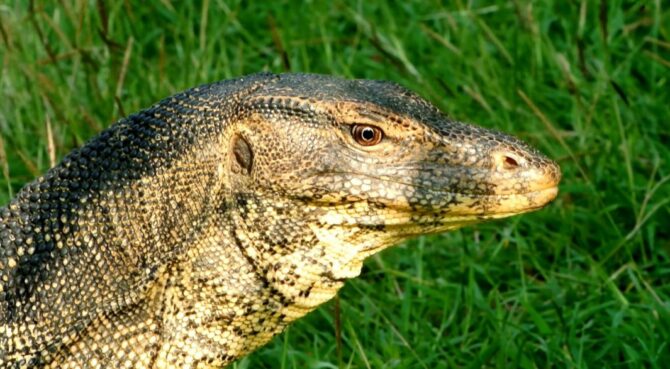Whether they slither on the floor or swim through waters with their fins, many animals survive well without legs.
They are usually aquatic, but a lot of terrestrial animals don’t rely on their legs to move.
The most common legless animal is the snake, but there’s a lot more. Animals with no legs include sea lions, walruses, caecilians, octopuses, and snails.
The reason for this is related to their evolutionary history and the environments in which they live.
Ready for more? Discover up to 20 animals that do not have legs and how they evolved.
Examples Of Animals With No Legs
1. Snakes (Serpentes)
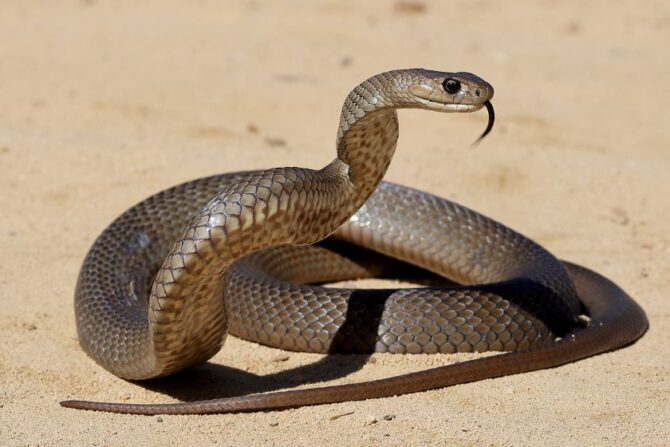
Starting our list is the most popular legless animal, the snake.
It is also one of the most common reptiles, occurring in all continents except Antarctica, Ireland, New Zealand, Greenland, and Iceland.
Snakes are classified under the order Serpentes, and there are over 3,000 species.
They move on their bellies. Their major locomotive tool is the muscles that they use to pull themselves forward.
Snakes have evolved to live in environments where they can move quickly through narrow spaces, such as burrows, without the need for legs.
Because they move too close to the ground, snakes don’t have eyelids.
This allows them to move without closing their eyes. In the place of eyelids, they have protective scales.
2. Snails (Gastropod)

The snail falls under the class Gastropoda, all of which are characterized by shells, mucus, and an absence of legs.
This class is widespread, being found on all continents except Antarctica.
There are over 40,000 species in existence today, living both on land and in water.
Without legs, snails move thanks to a ventral foot at the bottom of the body. This foot is muscular, making it strong enough to move the snail.
This ventral surface foot is also responsible for the mucus, which helps the snail move faster.
3. Walrus (Odobenus rosmarus)
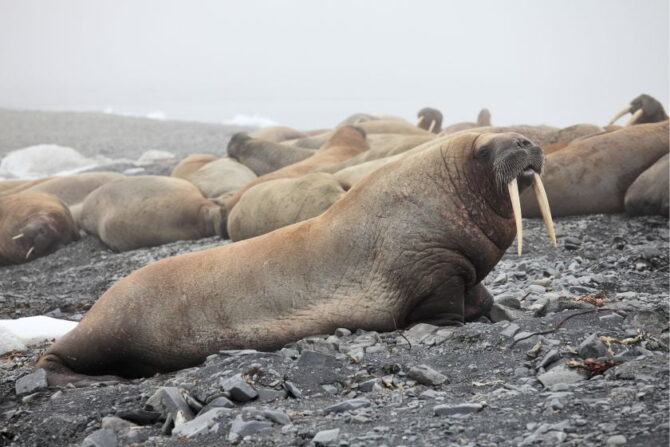
The walrus is the only living species in the family Odobenidae, with others being extinct. It is also the only member of the genus Odobenus.
There are two walrus subspecies, the Atlantic and Pacific walruses.
There are many similarities between these subspecies, one of which is the legless trait.
In place of legs, walruses have webbed flippers. These flippers can’t make it move the way legs do.
However, the flippers help its body move forward. The walrus is a huge animal and relies on these flippers to get from one spot to another.
4. Earthworm (Annelida)

The earthworm belongs to the phylum Annelida and is a terrestrial invertebrate.
It occurs worldwide, living in places with soil, the right temperature, and water.
This animal is known to be like a tube and breathes through the skin.
Similar to the snake, earthworms have no legs or even arms. They move thanks to their muscles, and they also have bristles that help them stick to surfaces.
5. Slugs (Gastropoda)

Slugs are gastropods, just like snails. The difference between these two gastropods is that slugs are without shells, but snails come with one.
Slugs are also named land slugs because they are terrestrial. They are found all over the world.
To move around, slugs use the muscle under their body. They do not have legs, just like their snail relatives. You can find these slugs in woodlands.
6. Glass Lizard (Anguidae)
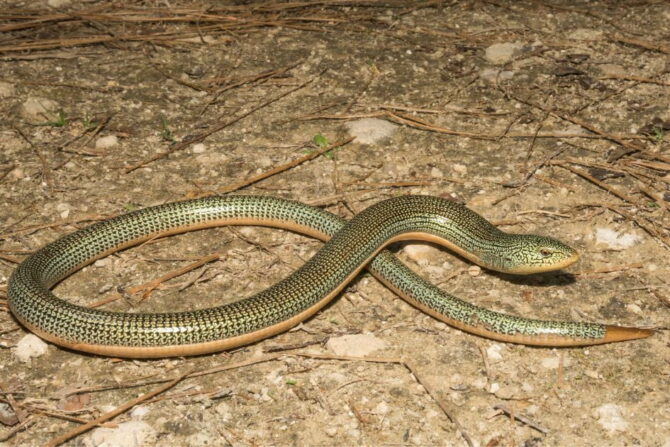
There are up to 7,000 lizard species, all of which fall under the Squamata order.
The glass lizard is used for the species in the family Anguidae. It is named this way because of how easily its tail is cut off.
It is a native of North America, Asia, Europe, and North Africa.
Glass lizards fall under the category known as “legless lizards.” This group looks more like snakes than actual lizards because they have no legs.
They slither on the ground as real snakes do. Some legless lizards have legs, but it’s useless to them.
7. Caecilian (Gymnophiona)

The caecilian looks like a worm. It is described as both vermiform and serpentine.
However, it belongs to the amphibian class where it is placed in the order Gymnophiona. It lives in the tropics of Africa, Asia, and South and Central America.
Caecilians are further grouped in the clade Apoda with more than 200 species.
Contrary to other amphibians, the caecilian has no legs. This is why it looks more like a worm or a snake.
These animals stay underground, so it’s hard to see them. This explains why it’s less popular compared to other amphibians.
8. Fish (Chordata)

Fish form a large part of aquatic animals, the other being marine mammals. They are characterized by gills and usually have fins instead of legs and limbs.
That said, some species like mudfish, axolotl, and garnai have limbs.
Generally, fish don’t have legs because their environment doesn’t need that. They move using their fins instead.
Fish have adapted to life in water and use their fins for swimming and maneuvering.
9. Whales (Cetacea)
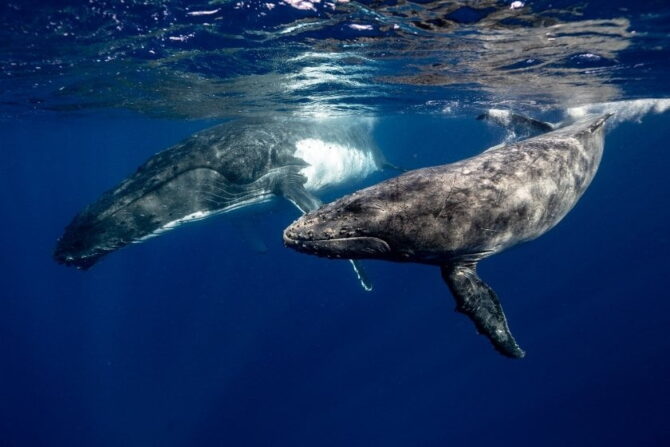
Whales as an infraorder Cetacea is a group of marine mammals.
Most people don’t refer to dolphins as whales, but from a formal perspective, dolphins are classified as whales.1
They are categorized into baleen whales and toothed whales.
Whales evolved from land-dwelling mammals that had four legs.
However, over millions of years, they adapted to life in the water, and their legs gradually transformed into flippers.
10. Clams (Mollusca)
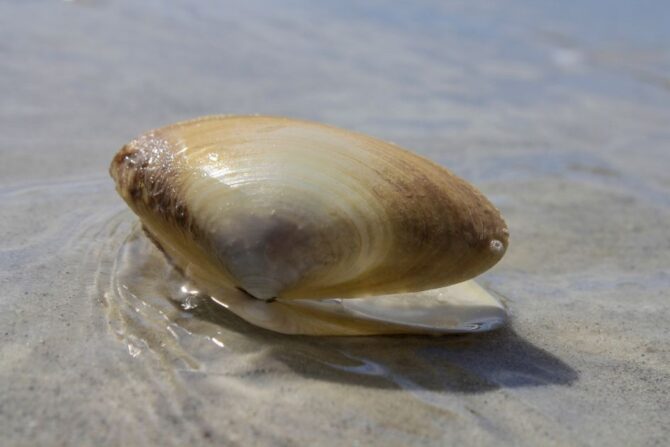
Clams belong to the Mollusca phylum, the second largest amongst invertebrates after the Arthropoda.
They are recognized by their equal shells. They live in both freshwater and saltwater, staying on seafloor and riverbeds.
Clams have no legs and are not structured to have one. Instead, they have burrowing feet and shells that help them move.
11. Octopuses (Octopoda)

While some may consider the octopus tentacles as legs, they are arms.
This is why we classify the octopus as a legless animal. There are around 300 octopus species, all found in the order Octopoda.
Octopuses are related to squids, nautiloids, and cuttlefish.
While the tentacles can’t be considered legs, they play the function of mobility.
The octopus moves by propelling itself with the tentacles, and while swimming, the tentacles remain behind.
12. Jellyfish (Medusozoa)

The jellyfish is also known as the sea jelly, a term used for members of the subphylum Medusozoa, which falls under the phylum Cnidaria.
There are around 2,000 species in the world, the largest being the lion’s mane jellyfish. This animal is worldwide.
The jellyfish is similar to the octopus in that it has tentacles in place of its legs.
These tentacles help it move as it pushes forward. The tentacles also act as a form of defense, using stings to deter predators and potential attackers.
13. Dolphin (Cetacea)
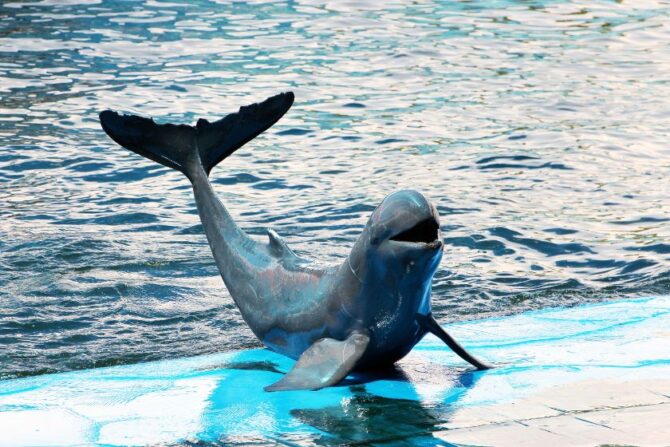
The dolphin is a member of the infraorder Cetacea, with there being 40 extant species.
These species fall under different families, including the Delphinidae, the Iniidae, and the Pontoporiidae.
You can find these animals worldwide, living mainly in warm waters. This isn’t absolute, though, as some species stay in a cold climate.
As stated above, dolphins are whales. Their ancestors also had limbs and lived on land.
This all changed as they evolved to become marine mammals and lost their legs. They move more with fins.
The loss of legs was a key adaptation for these species, as it allowed them to become more efficient swimmers and thrive in the aquatic environment
14. Sponges (Porifera)
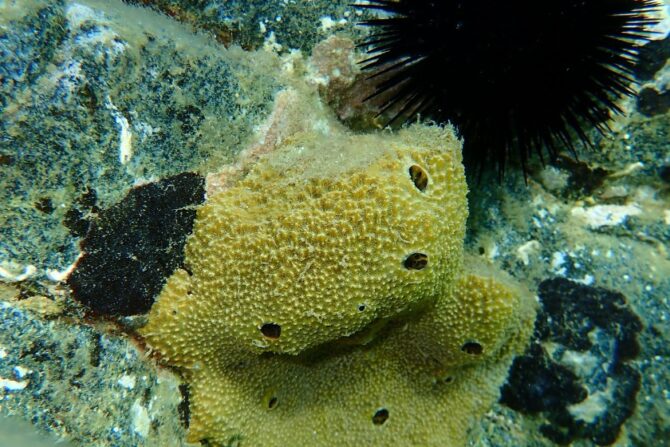
Sponges are members of the phylum Porifera. Though they don’t look like typical animals, they are part of the broad Animalia kingdoms.
This wasn’t always the case. Early naturalists considered sponges as plants, but that changed after these creatures displayed animal characteristics.2
Not surprisingly, sponges don’t have legs. They live at the bottom of the sea, where they don’t need limbs to explore.
Their bodies are filled with pores that enable them to get nutrients from the water.
Similar to plants, the sponge doesn’t have to move to get nutrients, hence the absence of limbs.
15. Sea Lions (Otariidae)
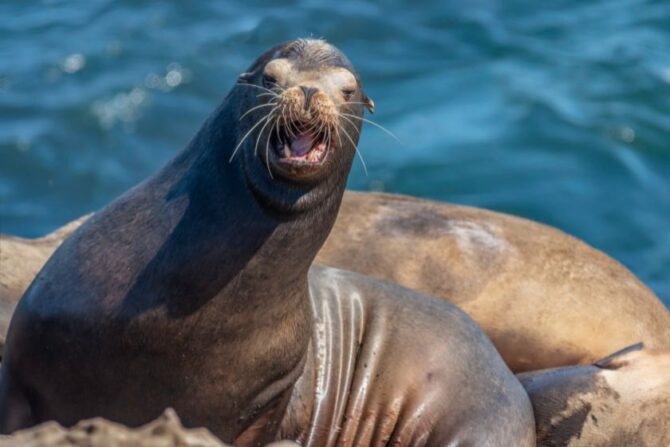
The sea lion is a member of the Otariidae family alongside the fur seals.
There are five sea lion genera which can be further subdivided into seven species, one of which is extinct.
The extinct species is the Japanese sea lion. The remaining species aren’t faring well as they are endangered.
In place of legs, sea lions have flippers. The latter helps them move both in water and on land. The flippers are webbed, like that of the walrus.
16. Eel (Anguilliformes)

The eel belongs to the order of ray-finned fish known as the Anguilliformes, which includes around 800 species.
Though the term “eel” is used for other animals that may not fall under the Anguiliformes family. Some examples are the spiny eel and the swamp eel.
Eels are aquatic animals living in freshwater. As such, they have no legs.
They are similar to snakes in looks, but their actual relatives are sharks.
17. Portuguese Man o’ War (Physalia physalis)
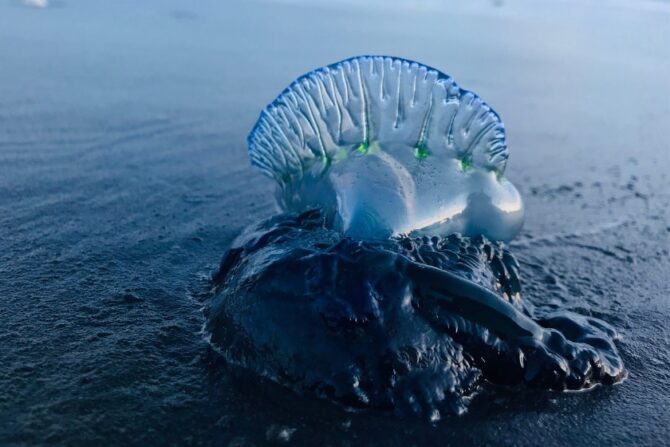
The Portuguese man o war lives in the Atlantic, Indian, and Pacific oceans.
The variant in the last ocean is called the Pacific man o’ war or blue bottle.
It belongs to the Physalia genus and the Physalidae family. You might find them washed ashore or floating in the ocean.
The man o’ war is a tentacled animal like the jellyfish and the octopus. These tentacles act like arms and legs, helping the animal move.
The man o’ war stings both for defense and hunting, making it among the most dangerous animals in the world. This ability to sting earned it the alternative name sea wasps.
18. Mussel (Mollusca)
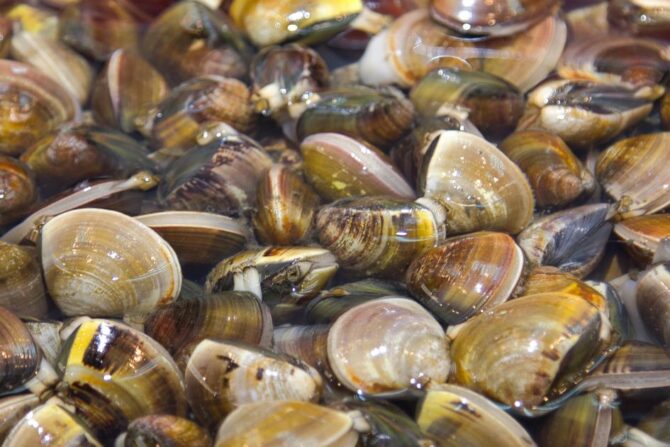
Mussels refer to different families in the mollusk phylum, living in both saltwater and freshwater.
They have shells like the clam, but theirs are longer and asymmetrical. The shells are divided into two halves called “valves”.
The mussel has a foot organ that plays the function of a leg.
It uses the foot organ to move through the substrate and can also serve as an anchor. Some mussel species have bigger feet than others.
19. Seal (Pinniped)
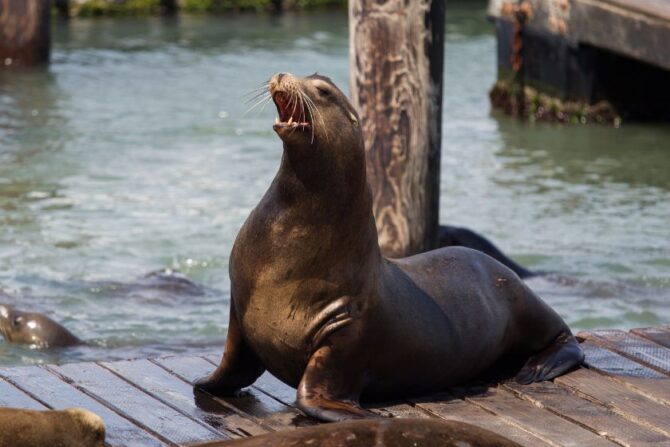
The seal is a common term for the clade pinniped. The 34 extant species are grouped into three families, all of which are described as carnivorous and semi-aquatic.3
The latter is due to its ability to live both on land and in water.
Seals are related to weasels, raccoons, and other musteloids, but it moves like sea lions and walruses.
It has flippers rather than legs which it uses for movement.
20. Tapeworm (Cestoda)
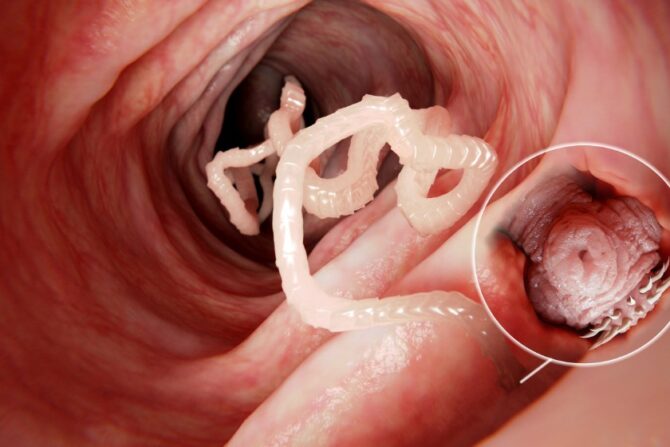
The tapeworm is a parasitic creature grouped under the Cestoda class.
It is named after its body shape, looking like ribbons. There are over 6,000 Cestoda species, all of which are parasites.
Being worms, these creatures aren’t legged animals. They move a lot, like snakes and other worms.
Final Thoughts
Animals without legs are either terrestrial, aquatic, or semi-aquatic.
While humans and many terrestrial mammals won’t survive well without legs, these creatures aren’t at a loss.
They either have other organs they use to move, or they slide on their bellies.
Also See: Animals Without Brains
References & Notes
Facts Sources:
- Are dolphins whales? IFAW.
- Why are sea sponges considered animals? UCL Researchers in Museums.
- Seals, Sea Lions, and Walruses. Smithsonian Ocean.
